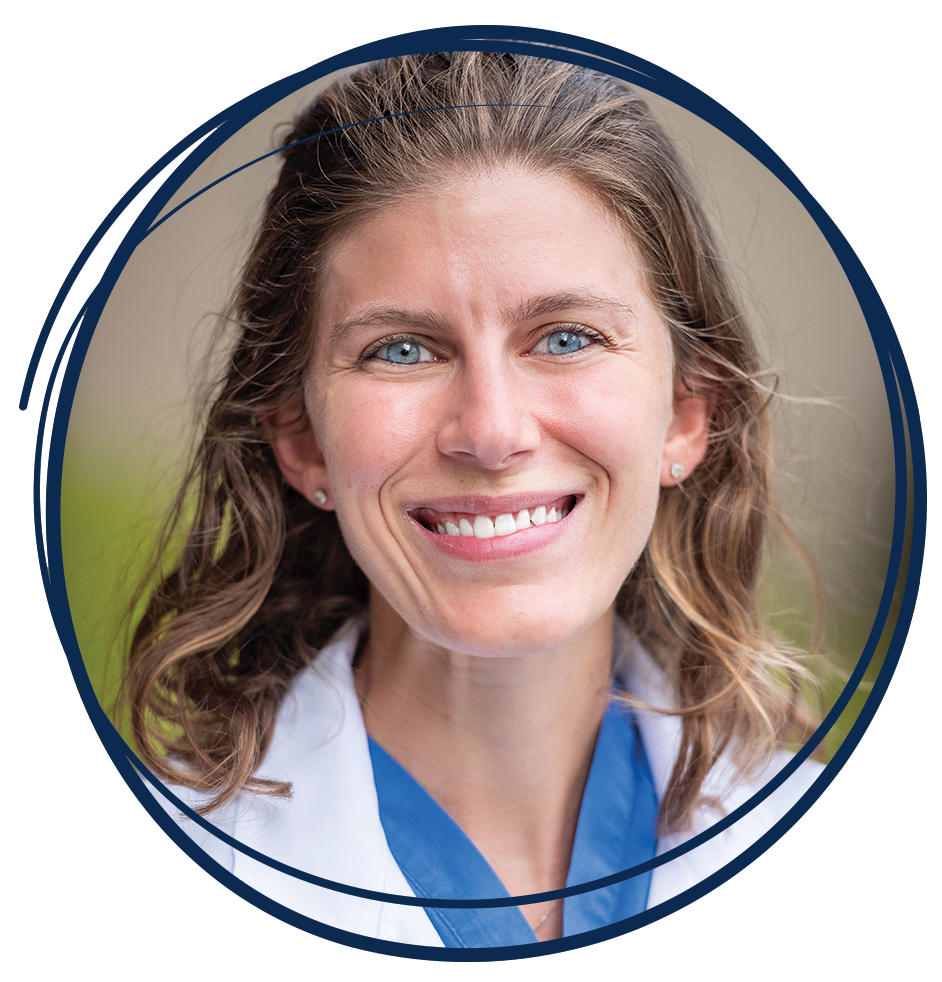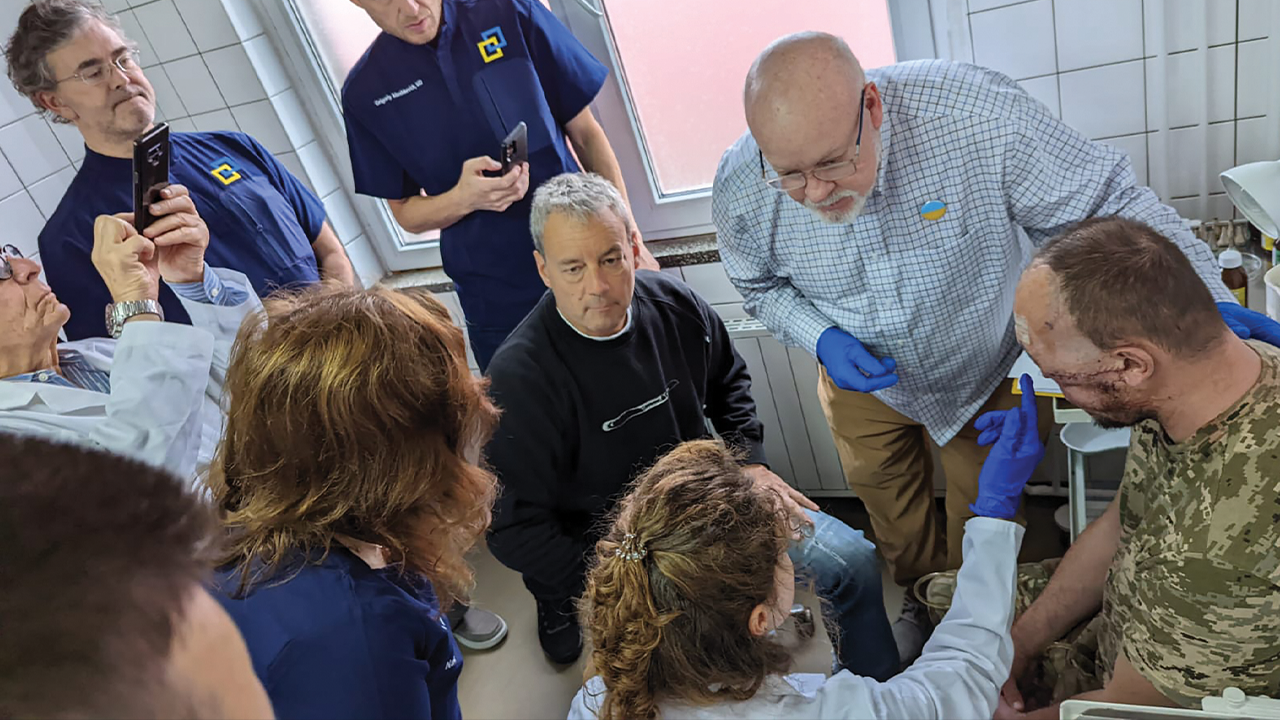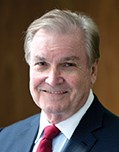Undertaking the Research
Prior to Dr. Titan receiving her scholarship, the SSC research field was filled with opportunities for new discoveries. Not only were the cells responsible for tendon-to-bone healing incompletely characterized, but the origins of the cells themselves were unknown.*
For Dr. Titan, discovering this piece of the puzzle could provide more awareness about how tendons could be better healed, which began with the flow cytometry she undertook in her lab work, and “led to this big project of looking into whether SSCs play a role in tendon-to-bone healing,” she said.
Dr. Titan had been working with plastic surgeon Michael T. Longaker, MD, MBA, FACS, the Deane P. and Louise Mitchell Professor and founder of the Longaker Laboratory at Stanford. Together with Charles K. F. Chan, PhD—who was then a postdoctoral fellow working at the lab—these researchers were the first to identify SSCs in humans and mice.†
“It was an absolute pleasure to mentor Ashley in my laboratory,” Dr. Longaker said. “Ashley is a very bright and determined trainee who really wants to translate fundamental discoveries into novel clinical therapies.”
Dr. Titan found an ideal mentor in Dr. Longaker, whose research interests include wound repair. “From the very beginning, I was impressed by her organizational skills and mastery of sophisticated scientific techniques,” Dr. Longaker said.
Upon receiving her scholarship, Dr. Titan and a team of other researchers at the Longaker Laboratory investigated whether SSCs can play a role in tendon-to-bone healing. “Without the scholarship, I would not have been able to pursue such an exciting research project,” Dr. Titan said.
Using a supply of laboratory mice as test subjects, Dr. Titan and her team initially increased numbers of SSCs in the enthesis injury to the Achilles tendon-to-bone interface. The team also looked at the role of transforming growth factor beta (TGFβ) in the tendon-to-bone healing process.
By treating the area of injury with a TGFβ inhibitor, the team detected that the number of SSCs increased significantly, which can be a key part of the recovery process. Findings from her research were published in the July 2022 edition of the journal STEM CELLS Translational Medicine.*
“What was very important was that Dr. Titan discovered a link between the SSCs and the regeneration of tendons,” said Dr. Chan, who is now an assistant professor of surgery at Stanford. “This was not known before.”
Dr. Chan also credits Dr. Titan for developing new assays to test the presence of SSCs postinjury, which could potentially be mobilized to produce new tendon tissue. “This is a really important finding because of the significant clinical burdens associated with tendons,” he said.
Future Research Plans
Ideally, the goal of clinical research is to improve patient care and, historically, many of these discoveries have been supported by awards such as the ACS Resident Research Scholarship.
ACS has funded 213 Resident Research Scholarships since the award was established in 1970.
“Doing basic science projects, getting the mice, and having the opportunity to access all of the amazing laboratories and facilities at Stanford does require a significant amount of funding,” said Dr. Titan. “It would not have been possible without this grant. This grant supported both my ability to do it, and the time to be able to do the research.”
The 2-year Resident Research Scholarship was the first research award Dr. Titan ever received. Since then, she has been awarded a grant by Stanford for transplant and tissue engineering research. Dr. Titan continues to be involved with tendon research, and has delved into research on the postoperative pain experiences of patients.
“The lessons that I’ve learned from these 2 years of this project will be extraordinarily essential and will continue to lend influence further out in my research career,” she said.
Away from her medical and research pursuits, Dr. Titan remains highly involved in athletics, having participated several times since 2011 in the Escape from Alcatraz Triathlon, held in San Francisco. She credits athletics for helping to instill a work-life integration that prevents her from becoming fatigued with her everyday professional responsibilities.
“If I ever get tired or need to think through a problem, I go out for a run to clear my head,” she said. “I need the endorphins to be able to survive. It 100% keeps me going.”
Just as her athletic experiences helped to inform the course of her past medical research, Dr. Titan plans to continue drawing upon athletics as a guide for her future professional endeavors.
“Most injuries only heal 80%, but how do you get to that 100% strength level?” she said. “That’s the billion-dollar question. When I participate in athletics, it’s where I have my greatest ‘Aha!’ moments or think about a really interesting idea that I want to pursue.”
To learn more about the ACS Foundation, its programs, and how to contribute, go to facs.org/acsfoundation.












